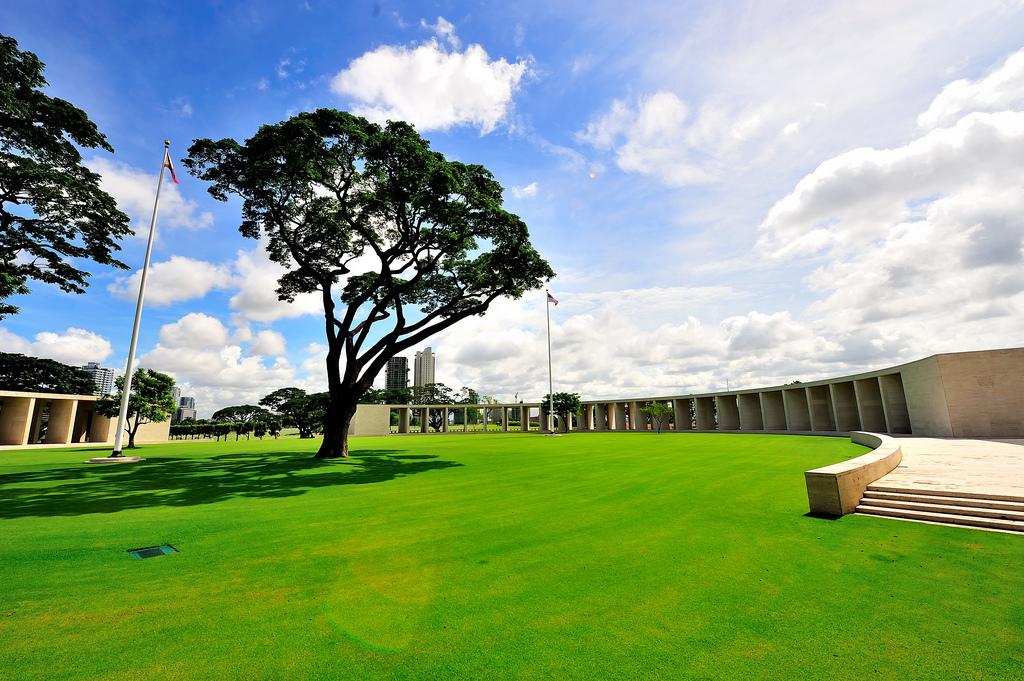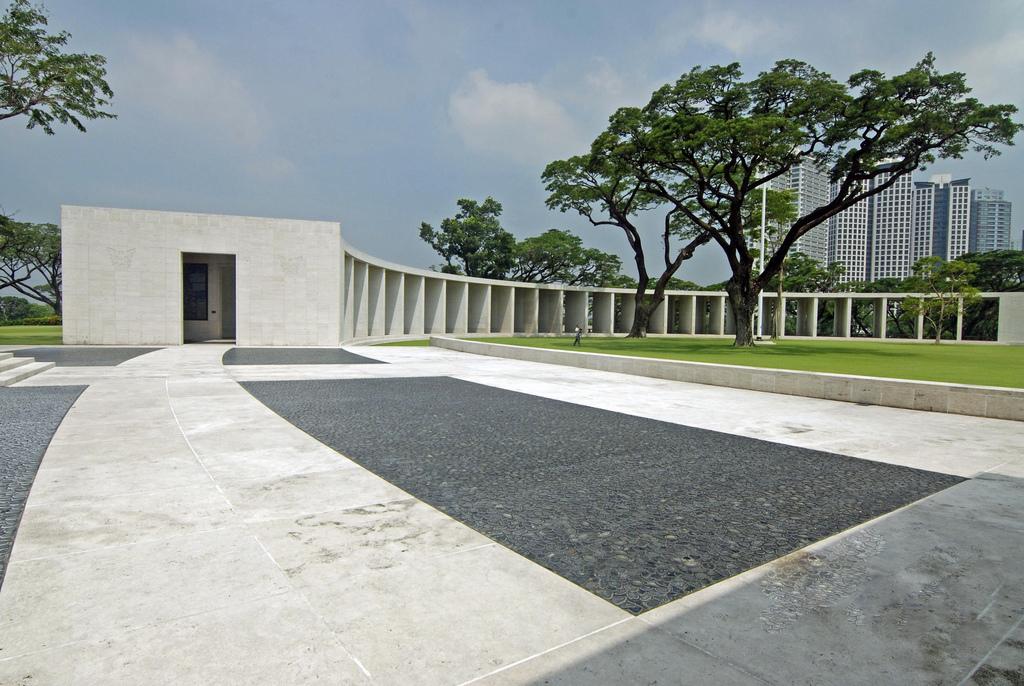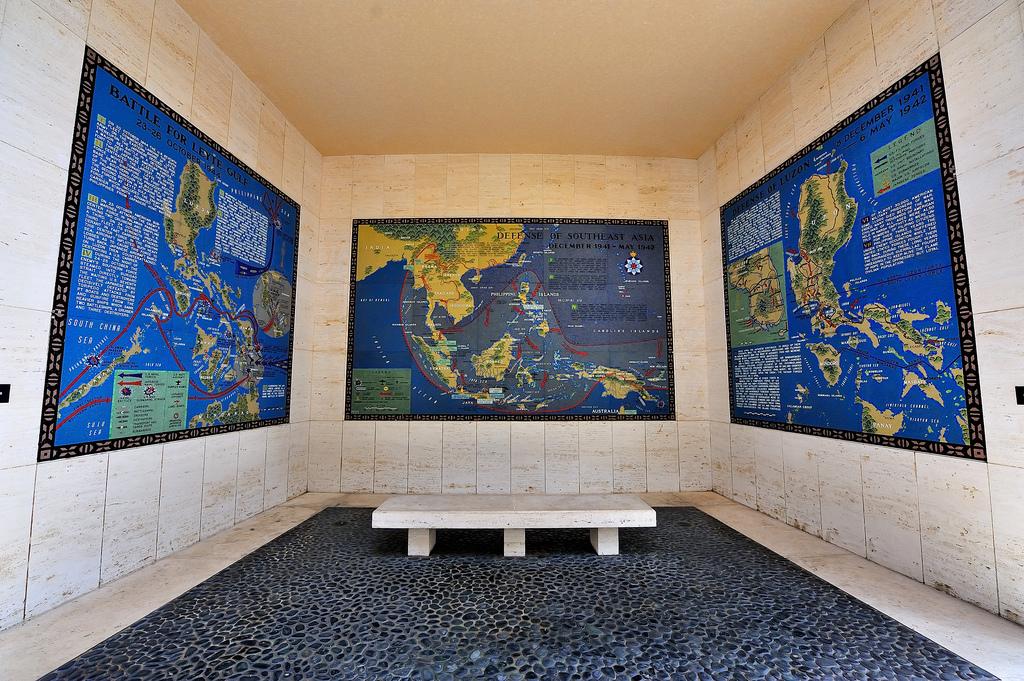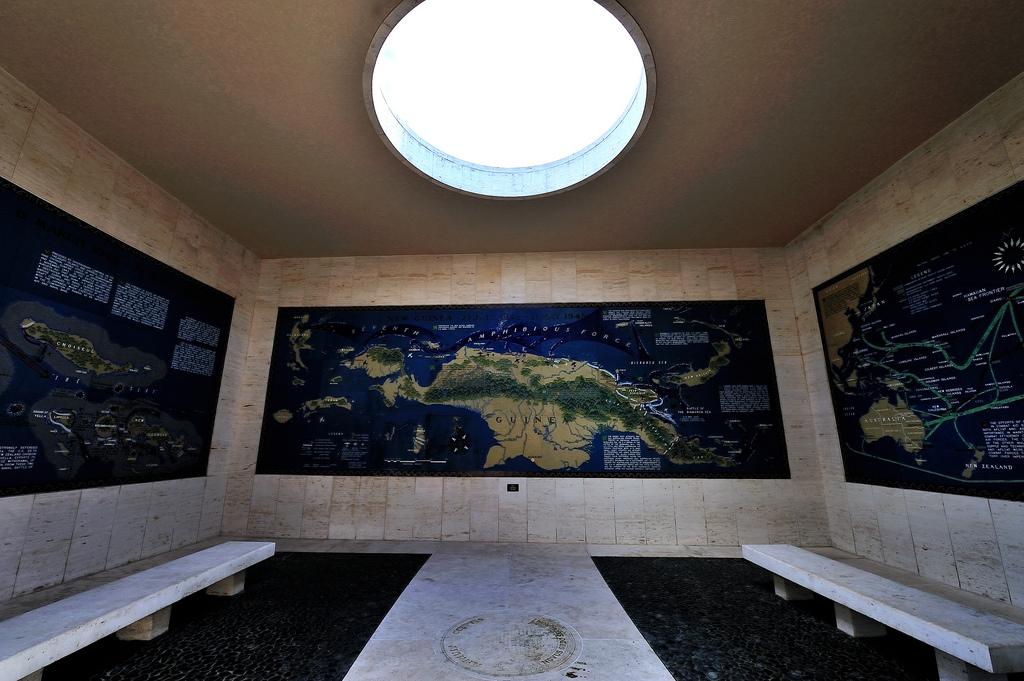
There have been many heroes who fell for freedom during World War II, and they are remembered in many sites throughout the country in various monuments and memorials so that their sacrifices will not be forgotten. One of the largest of these is the Manila American Cemetery and Memorial, located in Fort Bonifacio, Taguig City, Metro Manila, Philippines.

The cemetery, 152 acres (62 ha) or 615,000 square meters in area, is located on a prominent plateau, visible at a distance from the east, south and west. With a total of 17,206 graves, it has the largest number of graves of any cemetery for U.S. personnel killed during World War II and holds war dead from the Philippines and other allied nations. Many of the personnel whose remains are interred or represented were killed in New Guinea, or during the Battle of the Philippines (1941-42) or the Allied recapture of the islands.
The headstones are made of marble which are aligned in eleven plots forming a generally circular pattern, set among a wide variety of tropical trees and shrubbery.

The Memorial is maintained by the American Battle Monuments Commission. It is the largest site administered by the Commission in the number of graves and of those missing whose names are recorded on the walls of the memorial.
The cemetery is open daily to the public from 9:00 a.m. to 5:00 p.m. except December 25 and January 1.
The entrance to the cemetery is at the far (north) side of the large grassed circle just beyond the military sentinel's post which is at the junction of the McKinley and Nichols Field Roads. Immediately beyond the gate is the plaza with its circular fountain; at the right is the Visitors' Building. Stretching from the plaza to the memorial is the central mall, which is lined with mahogany trees (Swietenia Macrophylla). Circular roads leading eastward and westward through the graves area join the straight roads along the edges of the mall. To the east of, and lower than, the graves area are the service area, deep wells and reservoirs. A purification system provides potable water within the cemetery.
Twenty-five large mosaic maps in four rooms recall the actions of the United States Armed Forces in the Pacific, China, India and Burma.


Carved in the floors are the seals of the American states and its territories.

It is hoped that Manila American Cemetery and Memorial will continue to remind people of the horrors of war as well as the bravery of people who wish to keep hope and freedom alive.










